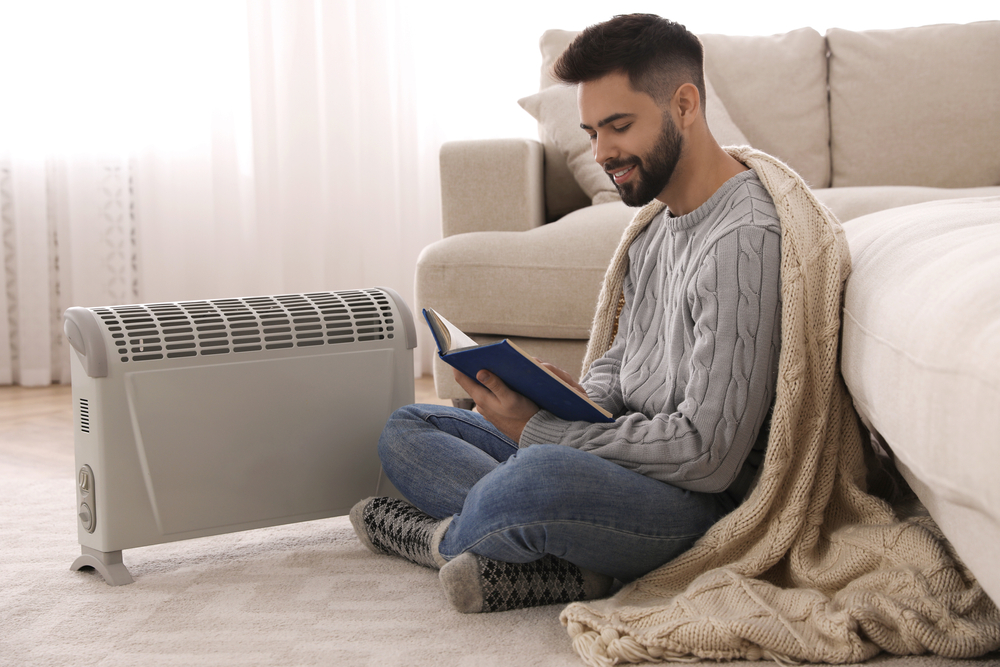Dry eye, which affects approximately millions of Americans, occurs when the eyes do not produce enough tears or when tears evaporate too quickly. Common symptoms of dry eye include redness, irritation, burning, and feeling like something is stuck in the eye.
For many people, dry eye symptoms worsen during the winter months. Keep reading to learn why dry eye worsens in winter for some people and what you can do to find relief!
Why Does Dry Eye Get Worse in Winter?
There are several factors during winter that can worsen dry eye. These factors include:
Lower Air Humidity Levels
Cold, wintery air tends to be much drier and less humid than warm air. At lower temperatures, the air isn’t able to hold onto as much hydrating water vapor.
The drier air in winter accelerates tear evaporation, affecting the eyes’ ability to remain adequately moist. Dry winter air is often the most significant cause of worsening dry eye during the colder months of the year.
Indoor Heating

Indoor heat sources, such as radiators and forced-air heating systems, can significantly reduce moisture levels in the air. Heat from wood stoves and fireplaces, which add smoke to the air, can further worsen dry eye.
The dry air caused by indoor heating can strip away naturally occurring eye moisture. It can prevent the eyes from producing tears that continually lubricate the eyes.
Wind Exposure
Exposure to gusts of dry winter wind can quickly dry out the eyes and worsen dry eye symptoms. Wind affects the eyes by removing the thin tear film on the eye’s surface.
Even brief exposure to windy conditions, like walking from your car to your home or workplace, can trigger common dry eye symptoms. Wind exposure can even cause additional symptoms, like excessive wateriness.
Increased Screen Time
Many people spend more time indoors during winter, often engaging in activities like watching television, working on a computer, or scrolling through smartphones. Prolonged screen use can reduce blink rates, which can worsen dry eye symptoms.
Blinking helps spread tears evenly across the eye’s surface. A lower blink rate prevents the eyes from continually replenishing lost tear film.
Dehydration
People often drink less water during colder months, leading to mild dehydration. Dehydration affects the body’s ability to produce adequate tears, contributing to dry eye symptoms.
Additionally, consuming caffeinated beverages, such as coffee or tea, to stay warm can compound the problem. Caffeine is a diuretic that can increase the body’s outflow of fluids.
Finding Relief from Dry Eye in Winter
If you are experiencing worsening dry eye symptoms during the winter months, there are steps you can take to find relief. These steps include:
Use a Humidifier
A humidifier can help relieve the symptoms of dry eye by adding moisture to the air in your home or workplace. Maintaining an indoor humidity level of 40-60% can create a more comfortable environment for your eyes.
Wear Protective Eyewear

When spending time outdoors, always wear protective eyewear, like wraparound sunglasses or goggles, to shield your eyes from dry winds and harsh weather conditions. Protective eyewear can help reduce tear evaporation and protect the delicate surface of the eye.
Practice the 20-20-20 Rule
To prevent screen-related dry eye, practice the 20-20-20 rule: every 20 minutes, look at something 20 feet away for at least 20 seconds. This practice helps encourage regular blinking and reduces eye strain.
Stay Hydrated
Make a conscious effort to drink plenty of water throughout the day. Staying well-hydrated helps your body produce an adequate supply of tears and supports overall eye health.
Use Artificial Tears
Over-the-counter artificial tears or lubricating eye drops can provide relief by supplementing natural tear film. If you need to use eye drops frequently, choose preservative-free options to avoid irritation from harsh preservatives.
Avoid Direct Heat
Stay away from direct heat sources, like radiators or fireplaces, as they can further dry out the air and your eyes. Position the heating vents in your car away from your face and eyes.
Add Omega-3 Fatty Acids
Omega-3 fatty acids have anti-inflammatory properties that can help improve tear output and promote overall eye health. Leafy green vegetables, nuts, and fish are all good sources of this nutrient.
Limit Contact Lens Use
Contact lenses can worsen dry eye symptoms, especially in the winter. Consider reducing the amount of time you wear contact lenses or switch to daily disposable lenses.
Should You See an Ophthalmologist for Dry Eye?

If you are experiencing the symptoms of dry eye, you should consult your ophthalmologist for an accurate diagnosis. While over-the-counter eye drops and behavioral changes can help most people, others may need more advanced treatment for their dry eye.
The advanced treatments your ophthalmologist may recommend include:
- Prescription eye drops, gels, and ointments
- Intense pulsed light (IPL) therapy
- Punctal plugs
- Other specialized therapies, such as LipiFlow, BlephEx, and TearCare.
Dry eye is often worse during winter due to drier air and lower humidity. You can find relief from winter dry eye symptoms with steps like using a humidifier, wearing protective eyewear, and staying hydrated.
If these steps aren’t enough, your ophthalmologist can provide advanced treatments to ensure the health of your eyes and the comfort of your vision.
Are you experiencing increased dry eye symptoms? Schedule an appointment at Dell Laser Consultants in Austin, TX, today!





